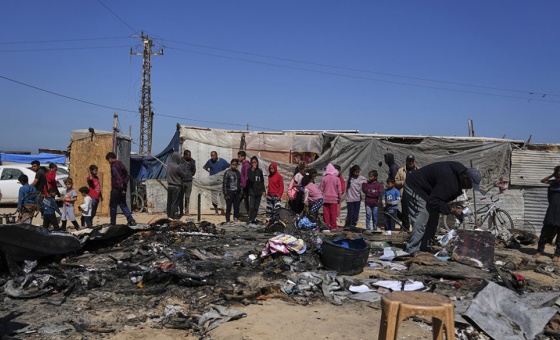This is the last article you can read this month
You can read more article this month
You can read more articles this month
Sorry your limit is up for this month
Reset on:
Please help support the Morning Star by subscribing here
A WOMAN was pulled out of the rubble more than 72 hours after a series of powerful earthquakes hit Japan’s western coast, as hope for finding more survivors began to diminish.
The death toll today grew to at least 94 and the number of missing was lowered to 222, having shot up the previous day.
Tens of thousands of people remain without power and water while hundreds remain isolated from help as damaged roads and landslides caused blockages.
Thousands of Japanese troops have joined the effort to reach the hardest-hit spots on the Noto peninsula, the centre of the quake, connected by a narrow land strip to the rest of the main island of Honshu.
Experts have warned of disease and even death at the evacuation centres that now house about 34,000 people who lost their homes, many of them elderly.
Masashi Tomari, a 67-year-old oyster farmer who lives in Anamizu City in Ishikawa, said it was tough sleeping on the floor with just one blanket.
There was no heating until two stoves finally arrived on Thursday, three days after the 7.6 quake struck.
“This is a terrible, cold place,” he said, adding that he felt at a loss thinking about his home damaged in the earthquake.
As of Friday, running water was not fully restored in Anamizu and survivors in Kato had to get water from a nearby river to flush the toilet.
Dozens of aftershocks have rattled Ishikawa and the neighbouring region in the past week.
Japan, with its crisscrossing fault lines, is an extremely quake-prone nation.
Weather forecasts predicted rain and snow over the weekend, and experts warned of more aftershocks.







